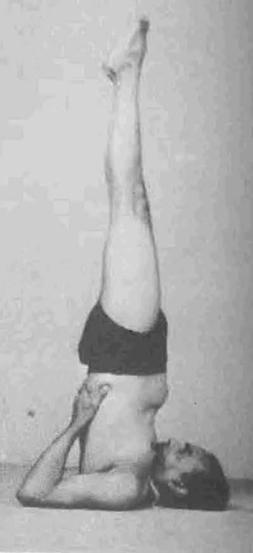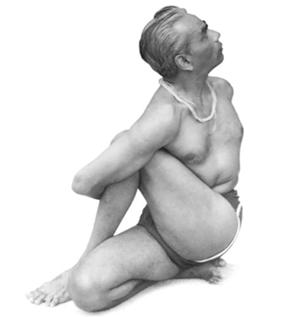Links & FAQ’s
Here are some links to other
Iyengar Yoga sites as well as some
frequently asked questions on yoga.

Links
bksiyengar.com
This is the official website of BKS Iyengar. Gives information on Iyengar yoga, BKS Iyengar, the Ramamani Iyengar Memorial Institute in Pune, India, which is the heart and soul of Iyengar Yoga!
iyengaryogacanada.com
Website of IYAC (Iyengar Yoga Association of Canada/ACYI Association canadienne de yoga Iyengar). Providing comprehensive, up-to-date information about the practice and teaching of the Iyengar method of Yoga in Canada.
iyengaryogavancouver.com
Provides information about Iyengar classes, instructors, news and information throughout BC.
kelownayogahouse.org
A non-profit, charitable society offering Iyengar Yoga to the Kelowna community.
iyengaryogacentre.ca
A non-profit society promoting the teachings of Iyengar yoga throughout greater Victoria.
iynaus.org
Official website of the American Iyengar Yoga Association.
whenlifeisgood.com
A resource page for Iyengar Yoga Home Practice Sequences.
consumersadvocate.org/yoga-mats
A comprehensive guide to Eco-Friendly, Non-Toxic Yoga Mats
columbiarecoverycenter.com
Yoga has long been known to be a great way to relieve stress, strengthen the body and allow participants to get in touch with their spiritual side. But can it be an effective tool against addiction?


“Your body exists in the past and your mind exists in the future.
In yoga, they come together in the present.”
– BKS Iyengar



“Training of mind and body leads to awareness of the soul.”
– BKS Iyengar

FAQ’S
What is Yoga?
Yoga is a classical Indian discipline which promotes physical, mental and spiritual health. It is as relevant in twentieth century Canada as it was in the India of thousands of years ago. Yoga is not a religion but a way of life which encourages each individual to realize their own potential.
How does Iyengar Yoga differ from other styles of yoga?
Yoga in the Iyengar tradition is based on the eight limbs of Astanga Yoga as interpreted by contemporary Yoga Master B.K.S. Iyengar. Iyengar Yoga promotes integration of body, mind and spirit through the practice of traditional yoga postures (asanas) and breathing techniques (pranayama). It places special emphasis on developing strength, endurance, balance and correct body alignment. As practice continues, a student’s ability to relax and concentrate improves and inner awareness is enhanced.


Is meditation taught in Iyengar yoga?
Iyengar yoga is meditation in action. As students practice the postures, the mind becomes focused on the actions of the posture and the movement of breath. As the mind unites with the body and breath, students move into a meditative state. Self-exploration occurs through discovery and release of physical tension and psychological resistance.
What are the benefits of Yoga?
Yoga involves techniques for stretching, strengthening and relaxing the body. Most forms of exercise reinforce misalignment. Only our more flexible areas tend to be stretched and we rely on our already more developed muscles for strength. Iyengar Yoga encourages weak parts to strengthen and stiff areas to stretch, thus awakening and realigning the whole body into good basic posture. As the body moves into better alignment, less muscular work is required and relaxation increases naturally.
- Increased flexibility: In our daily lives and in many fitness activities, certain muscle groups are neglected. For example, running and biking or just a lot of sitting can shorten the hip flexor and hamstring muscles which in turn can lead to back problems.
- Improved stamina and strength: Iyengar Yoga teaches that strength and flexibility must develop together in order to create a healthy body. Once a yoga student develops a good understanding of the asanas, the yoga practice can become aerobically challenging.
- Improved joint movement: Even the most fit people seldom use the full range of their body’s possible movements. When movement in joints is curtailed for any number of reasons, increased stress often occurs in another area, often the spine. Full joint movement improves blood circulation, removal of wastes and lubrication. Left/right imbalances can be modified with careful alignment work.
- Relaxation: Stretching and relaxation go together. Relaxation is an essential part of daily life. When one practices yoga asanas, the meaning of relaxation becomes clearer as one learns how to release unnecessary muscular tension. Conscious relaxation at the end of each yoga class is a time for the body to cool, remove toxins and harmonize the body, mind and emotions.
- Breathing awareness: Lifelong habits affect the way you breathe. A body toned by stretching will be more fit for deep breathing than one that is weak and poorly aligned. In yoga one becomes aware of how emotions and mental states affect breathing and visa versa.


I Have Health Problems, Can I do Yoga?
A yoga class offers a comfortable mix of ancient wisdom and practical science. We get more and more referrals from health professionals as the benefits of yoga are experienced. Yoga gives participants control over their own well-being. Yoga can be adapted to suit any individual no matter what their age or state of health. Learning skilful use of the back is fundamental in all yoga classes and yoga is wonderful during pregnancy. Because Iyengar Yoga is done with attention to precision positioning and balance there is little risk of injury. It is a personal and non-competitive activity. While a class may appear to be very physical, the workout will be mental and spiritual as well. As one yogi said, “Yoga is not learning how to stand on your head; it’s learning how to stand on your feet”.
“Asanas keep your body, as well as your mind, healthy and active”
– BKS Iyengar
Subscribe to receive our emails on upcoming news and workshops!
If you would like to keep up to date on what is happening at the studio, please sign up to receive our emails.